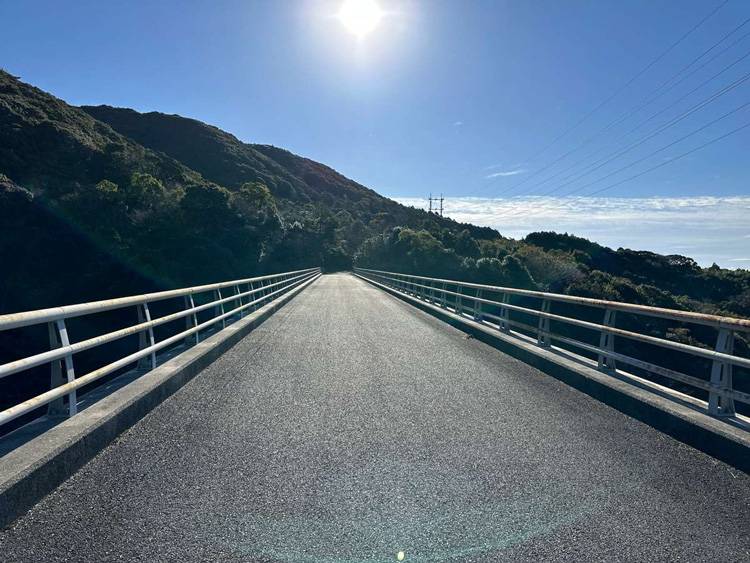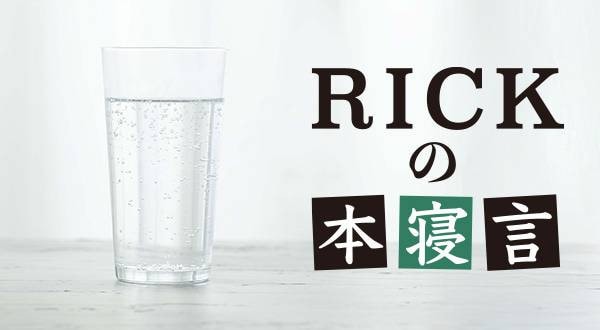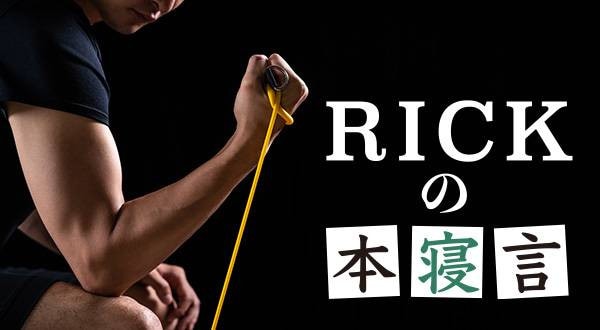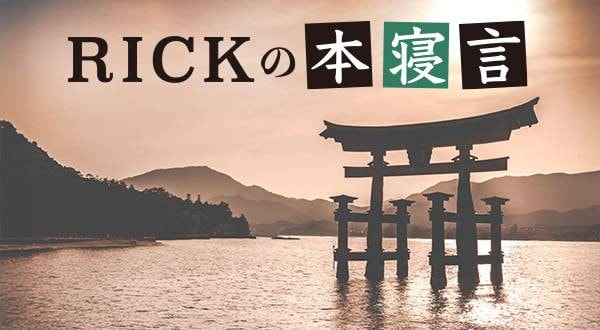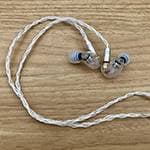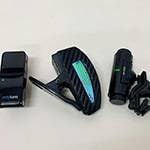I started the 88 pilgrimage sites in Shikoku in November 2023. During Golden Week on May 3rd, I finally surpassed the 1,000-kilometer mark, 19 days after I started the pilgrimage. My goal is to complete the pilgrimage of more than 1,200 km in 22 days. I had originally planned for 30 days, but since I have overcome numerous obstacles and continued training, my body has adapted and I was able to increase the distance of travel per day. So, I was surprised to find that I am on track to complete the journey more than a week ahead of schedule.
My time to tackle this pilgrimage is limited. Since I also have to work, I always run with my laptop in my backpack. I also pack water, nutritional drinks, and a minimal change of clothes, so the backpack is always full. Still, I try to keep the weight to a minimum so as not to hold back my running. I may be the first person in history to run the pilgrimage in 22 days with a laptop in the air, and I may be the last. Also for some reason, I always wear black, which reminds me of the words of a famous yuta (prophet) I met on Miyakojima Island, Ryukyu about 10 years ago, who said he saw Kukai running swiftly through the mountains in black clothing. All the sportswear I owned for my pilgrimage was black.
To begin with, completing the 1,200-kilometer pilgrimage route in 22 days, with its many difficult sections and mountain paths, is an absurd plan that places a great deal of pressure on myself. One acquaintance, who knows the severe conditions under which the impossible is piled up, refers to it as "torture”. That certainly seems like an appropriate word. There are many difficult sections that one would have to be prepared to die in order to get through, and there is a time limit of running the course during the daytime. Still, I am fortunate that God's mercy has barely kept me safe and alive, as I have endured the hardest test of endurance and patience. It’s a miracle that I have been well-prepared for the last three days.
Thanks to my strong will to complete all the pilgrimage routes in Shikoku at any cost, I was able to complete the journey so far. The main purpose was to confirm with my own eyes that the 88 pilgrimage routes in Shikoku are the paths to the worship of Tsurugisan, and to make this known to the world. Many people who have never actually walked the pilgrimage on their own feet have written conventional articles about the pilgrimage without anyone properly explaining it to them. That is all well and good, but the important thing about Tsurugisan is that it is never explained and never connected to the 88 pilgrimage routes in Shikoku. At least, as far as I know, there are none. Masami Uno, a well-known Christian writer, wrote in his book that Tsurugisan can only be seen from Kiriban-ji, the tenth temple, but he is also wrong. In order to worship Tsurugisan, pilgrims make detours at many places. Therefore, I have taken the role of providing the correct information to the world that will bring us closer to historical truths. For this purpose, I was prepared to undergo torture.
The challenge of the pilgrimage was a series of setbacks, and the impossible happened one after another. This was the first time in my life running the pilgrimage, so perhaps it was only natural. I experienced this suffering from the first day of the pilgrimage run, which began at Reizan-ji, the first temple on the route. This was July 23, 2023, under the blazing sun in midsummer. Having run a full marathon in the middle of summer, I was caught off guard. During the day, the temperature quickly rose to over 30 degrees Celsius. Moreover, the road from Reizan-ji to Kiriban-ji Temple (No. 10) was almost completely black asphalt. The ground was therefore filled with hot air heated by the sun, and it must have been more than 40 degrees Celsius. I had only two bottles of water in my backpack, but I thought I could buy some at a vending machine on the way, which was a big mistake. I was relieved to see one vending machine along the way, but my relief soon turned to despair. I didn't have any coins on me. Moreover, when I looked into my wallet, I found only 10,000 yen bills! Dehydration set in immediately afterward, and I began to feel faint. At the seventh station, there was a store at the shrine, so I finally got some water, but two bottles of water ran out in no time, and dehydration worsened once again. By the time I had passed the ninth temple, my legs began to get cramps. This was the first time that I had ever gotten cramps in my life. By the time I arrived at Kiriban-ji, the tenth temple of the day, both legs were cramped and I was no longer able to walk properly. Moreover, on the last leg of the pilgrimage, I saw that there were 333 steps of Kiriban-ji! I still vividly remember dragging my cramping leg, unable to speak, just clinging to the handrail as I climbed those stairs relying on all the strength from my hands. It was an amazing baptism from the very first day.
With such trauma, it took about two months for my mind to heal. Then, on September 23, I was fully prepared to take on the second day of the pilgrimage. The plan was to climb the first difficult mountain from Kiriban-ji (No. 10) via Fujiidera (No. 11) to reach Yakeyamadera (No. 12). I also made reservations at the Uemura Ryokan in Kamiyama-cho, Tokushima Prefecture, where pilgrims often stay. I was looking forward to relaxing there. However, immediately after departing from Kiriban-ji, I felt an unbelievable pain in my left leg muscle. Something strange was happening in my body. With this in mind, I could not run the 10 km to Fujiidera due to the pain, so I had to give up halfway. I decided to return to Tokushima by train from nearby Kamoshima Station. It was a time of humiliation as I finally began to realize that my body was in no condition to run the entire pilgrimage.
Unable to shake off this frustration, I increased the amount of strength training I had done since then, and once again paid attention to getting into good physical condition. Coinciding with the consecutive holidays on October 9, I made a crazy plan to go up the mountain from Kamojima Station via Fujiidera (No. 10) that, cross over Yakeyama Temple (No. 11), go down the mountain from there, and come back to Kannon-ji (No. 16). There was only one reason for this reckless plan; to make up for the previous trip. Even so, the distance traveled was 43 km. Although I had to climb a big mountain, the most difficult part of the race, the distance was about the same as a full marathon, so I thought we could make it. As it turned out, the ascent up the mountain was comfortable and I reached Yakeyamadera in no time. But after that, there was a problem. For some reason, the hard asphalt road leading gently downhill toward Tokushima was hurting my legs. Once again, I experienced the same severe pain that I had experienced on the second day. After stopping and stretching many times, I barely made it to the Kannon-ji (No. 16). Day 3 left me feeling uneasy about what I was inevitably going to face on the future treks.
Then, on the fourth day, I completed 25 km, 51 km without any problems on the 5th day, but I couldn't help but notice that my legs were not feeling well. Strangely enough, I never felt any pain when going up a mountain or up a gentle slope. However, when running on flat asphalt on the ground, the thigh muscle of my left leg, especially at the base of the bone, began to ache. Thinking it might be due to my age, I trained a little more each day, but I did not understand why it hurt when I ran on a flat surface. Finally, on the sixth day, I was to see hell.
I will never forget the sixth day of my pilgrimage run on November 13. It was 78 km from Yakuo-ji, the 23rd temple in Minami Town, Tokushima Prefecture, to Saigozaki Temple, the 24th temple on Murotomisaki, which most people would probably find easy but I thought would be the most difficult part of the run for me. The pilgrimage route is almost entirely asphalt on a flat road with almost no differences in elevation. For a normal person, this would be the easiest road to run on, but for me, it was the environment that left me feeling the most uneasy. Sure enough, my fears came true: my left leg started acting strangely after 40 kilometers, and after 50 kilometers, for some reason, it began to freeze up as if it were paralyzed and would not move. However, when I looked around, there was nothing to be seen on the pilgrimage route to Cape Muroto. There was no way I could call for help, so I had no choice but to make it to Cape Muroto by myself. I simply had to stop every time my legs stiffened and did stretching and bending exercises. I found that somehow the normal feeling would return and I would be able to run again. At first, however, once I stretched, I could hold out for a few hundred meters, but as I repeated the exercise more and more, I could no longer hold out for 100 meters. As a result, I must have stopped dozens of times. I would stop, stretch and stretch some more, start again, and then run until my legs became paralyzed. When my legs froze, I had to stop. Words cannot describe how painful this was. When my legs would stiffen up, I would feel intense pain. Often I would scream and groan on the road to Ashizurimisaki, but I kept on running. I was so convinced that one day I would be able to see the finish line. Sure enough, I made it to Murotomisaki on my own.
After that incident, I decided to do a thorough study of my foot and its defects. To be honest, I had no idea what the problem was. The clue was that when I was running on a flat, hard road, a severe pain began to flare up in the thigh muscle of my left leg, and if left untreated, my leg would freeze up. Upon further investigation, I discovered that this condition was iliotibial ligamentitis, which is common in marathon runners. When the knee is bent at a shallow angle on a flat road, the ligament of the thigh muscle continues to rub against the knee bone, causing frictional stress and pain.
After consulting with a doctor specializing in sports medicine, I decided to undergo a regenerative medical treatment called PRP. It was also a decision that would allow me to run through the rest of the pilgrimage. Simply put, this treatment is an attempt to improve damaged tissue and pain by culturing one's own stem cells and injecting them directly into joints. In addition to receiving that treatment, I also decided to incorporate daily muscle training focused on the thigh and buttock muscles in order to strengthen them. On top of that, I had never done these types of exercises before. As a result of these measures, I was able to successfully complete the 86 km from Shimanto to Ashizurimisaki, which terrified me at the thought of running this! In addition, X-rays and CT scans confirmed that there were no abnormalities in the knee bones, and my doctor determined that the pain in my knees was due roughly to aging, which meant that I would have to take painkillers such as Loxonin when running to ease the pain. In other words, I became convinced that as long as I could endure the pain and fatigue, I would be able to reach my goal.
As a result of these efforts, I was able to shorten my 30-day schedule to 22 days. I was confident that I could run 7 to 80 kilometers. Not only on flat roads, but also on pilgrimage routes that include some tough mountain paths, and I now feel that 50 km is not enough. This may be the result of my efforts. It is true that the 60-kilometer mark becomes a bit of a chore. On the 15th day, 71 km from Iyo-osu to Iwaya-ji, the 45th temple, there was a difference in elevation, and I felt I was at my limit. However, the fact that I was able to conquer the tough road to Iwayadera gave me a great deal of confidence, and I have been able to handle the long distances since then.
For this Golden Week 2024, in this way I was able to run 77 km from Iyo Miyoshi to Iyo Mishima via Yokominedera on Ishizuchisan. My body was of course all torn up and shaky. That evening, I went to Tokushima for a celebration party with my employees. I barely managed to put on a composed face and join the party, but I could barely stand up. I had no choice but to go on with my life, believing that I could do it if I tried. Also today, and yesterday on May 4th which I had just run, the weather has been so good that I have come up with the idea of going on my 20th pilgrimage run tomorrow on May 5th. I have already canceled my flight back to Tokyo to prepare for it. What will happen tomorrow? Since it’s a return flight from GW, all flights are full. I don't even have a change of clothes. Still, I will keep going and believe that the way will surely open up for me.
